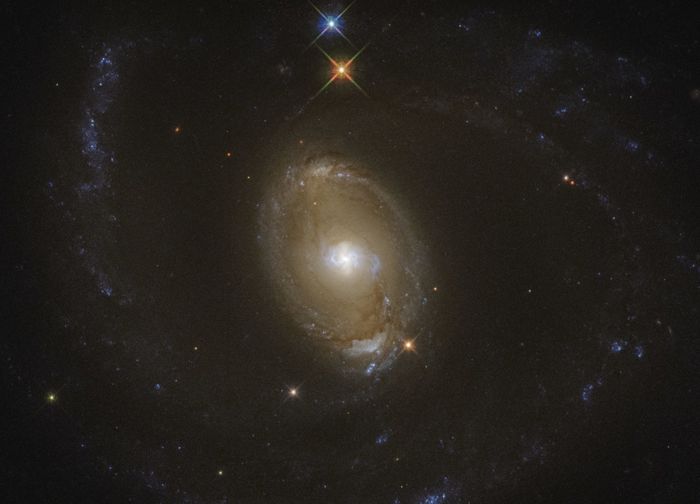Research Roundup: Week Five
Teymour Taj keeps you up-to-date with the latest scientific studies
Gravitational bending of light caught on camera

The European Space Agency’s (ESA) Euclid space telescope has captured a picture of a complete ‘Einstein ring’ around the galaxy NGC 6505, 590 million light years from Earth. This beautiful phenomenon is a consequence of Einstein’s theory of General Relativity, which predicts that the mass of the central galaxy distorts space itself around it. This means that the galaxy acts like a spherical lens, bending light coming from behind and magnifying it. This is known as ‘gravitational lensing’.
“The galaxy acts like a spherical lens, bending light coming from behind and magnifying it”
This effect allows us to see a background galaxy 4.42 billion light years away. The alignment of the two galaxies was perfect when the picture was taken, meaning the light from the background galaxy formed a perfect ring around the foreground one. The effect of gravitational lensing is an incredibly useful tool for astrophysicists, allowing us to examine the properties of objects normally too small or far away to be seen. Since the light coming from these galaxies was emitted billions of years ago, we can use this lensing to investigate the history of the Universe, potentially unlocking the mystery of the ‘dark energy’ powering its expansion.
Sniffing Pharaohs to study mummification
A group of academics have studied the ancient Egyptian method of preservation of the dead by analysing their smell. Using their own noses as well as scientific instruments, they have investigated the odours of mummies to determine which balms and resins were used in the mummification process. The advantage of this method is that it is relatively non-invasive, removing the need to take samples from fragile bodies. It is also a perhaps more ethical way of studying human remains.
Interestingly, the researchers found no correlation between the smells and the conservation states of the mummies. The volatile organic compounds associated with smells were categorised as being from conservation products, synthetic pesticides or products of biodeterioration. They noted the similarity in the profiles of mummies from the Late Kingdom of Egypt, which suggests that this method could be used to identify the time period when mummies lived.
“The wounds had closed in 26 out of 30 treated plants”
Bacteria can act as a plaster for plants
A Spanish study has revealed that cellulose (the main component of plant cell walls) produced by bacteria has the ability to heal plant wounds. Bacterial cellulose has already been used to treat burns and wounds in humans. The scientists cut small parts of the leaves of a lab plant and treated the cuts with patches of bacterial cellulose, which had silver nanoparticles added for disinfection. After a week, the wounds had closed in 26 out of 30 treated plants, while only 5 out of 30 untreated plants closed their wounds.
In addition, formation of new plant tissue around the wound was observed in the treated plants, but the untreated plants’ wounds looked dry with no tissue forming. The study was repeated on a different type of plant, giving similar results. This paves the way for the cellulose patch to be used in agriculture, such as for preserving cut plant material or acting as a growth medium for plants in the lab.
Want to share your thoughts on this article? Send us a letter to letters@varsity.co.uk or by using this form.
 News / Candidates clash over Chancellorship25 April 2025
News / Candidates clash over Chancellorship25 April 2025 Interviews / Dr Ally Louks on going viral for all the wrong reasons25 April 2025
Interviews / Dr Ally Louks on going viral for all the wrong reasons25 April 2025 Music / The pipes are calling: the life of a Cambridge Organ Scholar25 April 2025
Music / The pipes are calling: the life of a Cambridge Organ Scholar25 April 2025 News / Cambridge professor paid over $1 million for FBI intel since 199125 April 2025
News / Cambridge professor paid over $1 million for FBI intel since 199125 April 2025 Arts / Plays and playing truant: Stephen Fry’s Cambridge25 April 2025
Arts / Plays and playing truant: Stephen Fry’s Cambridge25 April 2025






